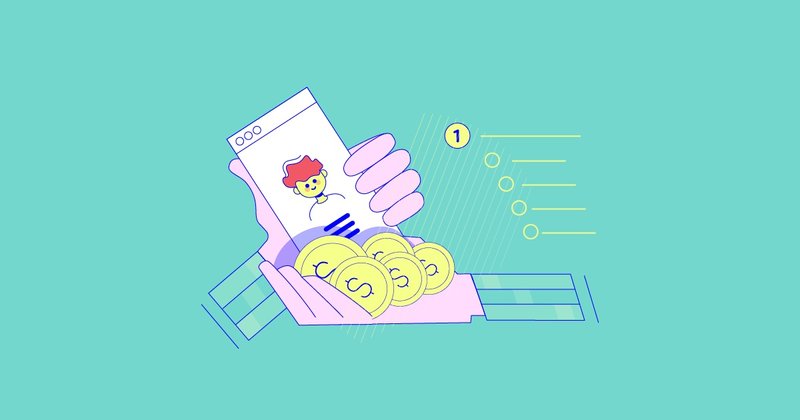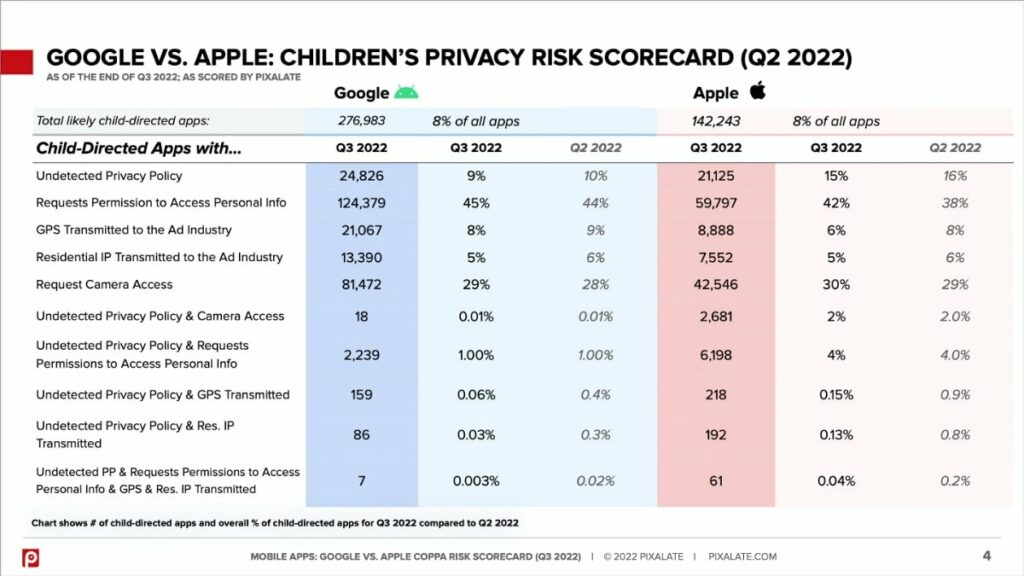What’s the best way to monetize kids apps?
Kids app makers face many challenges — finding a suitable monetization model is one of them. Here's why subscriptions might be the best solution.

Choosing the most appropriate monetization strategy is of fundamental importance to all apps, regardless of intended audience or function. But apps for children stand out as being uniquely challenging, often in ways that aren’t immediately apparent.
We’re not going to cover all of the challenges facing kids apps — that’s for another post. But there are three which have a huge impact on monetization (as well as on overall design) in this category.
- Kids apps are heavily regulated — in terms of data management, analytics, and advertising.
- When you’re building a kids app, you’re designing for two user groups: the kids and the parents. And unless you establish parent trust, they’re not going to pay.
- Kids have an insatiable curiosity and can be difficult to keep focused and engaged. And unless kids are engaged, parents aren’t going to see the value.
On the Sub Club podcast, we’ve interviewed two kids apps creators: Melissa Cash & Félix Boudreau from award-winning preschool app Pok Pok; and Brennan Clark from Sago Mini, which offers three subscription apps for preschoolers (and has seen over 100 million downloads).
What stands out within these conversations is the strength of the subscription model when it comes to monetizing kids apps. So through the lens of these three key challenges facing kids apps, and supported by the experiences of Pok Pok and Sago Mini, we will outline why kids apps makers should be looking to subscriptions.
Navigating child privacy guidelines
“We wanted to create the absolute purest experience for kids from day one. That has been challenging to be honest, because there are tricks of the trade, which I’m sure a lot of the people listening know about in order to make more money. But, from the very beginning of our journey, we wanted to make sure we’re starting with a clean slate that’s creating the most value for the child first.”
Melissa Cash, Pok Pok
The kids app space is, quite understandably, heavily regulated — as is all media aimed at children. For instance, there’s the Children’s Online Privacy Protection Act (COPPA) in the US, the Children’s code in the UK, and General Data Protection Regulation (GDPR) in the EU. These regulations, together with the subsequent app store guidelines (Apple’s and Google’s), heavily restrict what data you can collect and transmit in your app, as well as what content you can show to kids.
How does this affect monetization?
These regulations make it extremely difficult (and, in many cases, impossible) to make monetization models like in-app purchases or advertising work. The tactics that are used to make money from these are often manipulative or pressuring — such as frequently gating progress until an ad has been watched or a purchase has been made. These pressuring tactics are strictly against the rules. And children are especially susceptible — according to NN Group: “Because kids’ ability to plan and execute is still limited, they are more vulnerable to attractive games and may develop addictions to games or apps easily.”
As for advertising, while in general it isn’t entirely prohibited, the third-party networks you can use are restricted to ones which comply with Apple and Google’s rules. Also from the NN Group in a separate UX study: “On a more negative note, children still don’t understand the web’s commercial nature and lack the skills needed to identify advertising and treat it differently than real content.”
Sadly, despite these regulations, a worrying amount of apps don’t seem to be complying. A 2022 academic study found that “a majority” of apps used by 160 children aged 3 to 5 years “were associated with manipulative design features.” These “dark patterns” (interactive designs that benefit the designer at the expense of the user) include things such as making the user undertake tedious activities unless a purchase is made or disrupting the user during daily activities to return to the app.
Separately, a 2022 Pixalate study found that many thousands of apps across Apple and Google’s stores don’t comply with COPPA regulations.

Privacy regulations — for kids and adults alike — are only ever going to become more strict in the future. Subscriptions, meanwhile, can help app creators continue to grow and make consistent revenue, while still remaining compliant — and not resort, as these studies have shown, to trying to get around the rules.
Building parent trust
While you may be designing an app to be used predominantly by children, it’s not them who are going to be paying for the privilege. So you’re designing for two separate user groups, both of whom have different goals and expectations.
To convince parents to pay for a kids app, they need to see:
- what value the app is going to bring to their kids
- that their kids are actively using the app (and deriving that value)
- that the app is trustworthy and is safe in the hands of their kids
Whether or not a parent believes an app will deliver value is somewhat dependent on their own outlook (clearly, apps that focus on education and development have an advantage here). And to see long-term value, kids need to be kept engaged — we’ll be coming back to this shortly.
But crucially, none of this matters if an app doesn’t build trust with parents. How do you build parent trust? Avoiding “tricks of the trade”, with which most parents are going to be intimately familiar, is a great start.
“Subscriptions have unlocked a bit of additional trust in that there is no sneaky stuff.
We’re not doing in-app ads. We’re not doing a bunch of IAPs, gems, all this type of stuff. We have a single subscription price. Parents can lock that in or just enjoy the free experience. And having that kind of safe, trusted environment for their kid is another really big selling point for parents.”
Brennan Clark, Sago Mini

Sago Mini also builds trust with the style of content they provide: “[Make] sure it’s interactive. It’s not this passive…YouTube-kid style of content. That’s been a really big thing. Parents love that. Parents trust that.”
And for Pok Pok, not only does it find that the subscription model builds trust with parents, but so does adding a paywall right at the beginning of the user journey:
“We’re asking parents to commit right away to a subscription. We do offer a free trial because it’s very important that the kid can try the app and actually see if it’s a good fit… But at the same time, like Melissa said, we’re betting on parents who value having a very pure experience where there’s no paywall, there’s no sneaky game mechanics that the kids might fall into and then they get that crazy bill because of in-app purchases. We’re against that 100%.
And also I think it’s beneficial for the parents because… we want to create something that the child can play with without the parents being involved… A side effect with paywalls in a freemium version is that the kid’s going to run into a paywall. At two to six, he might not even be able to read… so he doesn’t know what’s happening.”
Félix Boudreau, Pok Pok
Trust comes when parents are confident that the app maker has their kids’ best interests in mind — and when the monetization model is hands-off and easy to navigate.
Keeping kids focused and engaged

And finally, even when you’ve built trust, if the kid isn’t engaged and deriving value from the app, then the parent won’t see the value in paying. Once again, the subscription model supports the kind of content creation needed to keep the experience fresh and interesting.
“We knew that we wanted to create something that was always evolving…because kids are so curious… So we knew we had to create new content regularly and we also had a million ideas… And in order to do that, we need recurring revenue. So a big piece of the why came from that. It was just like: we know we want to make more content over time, so we should be a subscription.”
Melissa Cash, Pok Pok
Keeping kids engaged is only half the battle. The other half is making sure the parent knows it. One way Sago Mini achieve this is by building a separate app for parents:
Another thing that we did was we launched a parent app as well…when their kid is drawing something or doing a coloring sheet in one of our apps, there are artifacts that are actually sent to the parent app. And so that’s this nice touchpoint that reminds the parents of the value that their kids are getting.
Brennan Clark, Sago Mini
In short: kids app makers should look to subscriptions
Subscriptions aren’t necessarily going to work for all apps, and they may work well in combination with other monetization methods in a hybrid approach. But subscriptions play well with strict child privacy regulations, build trust with parents, and provide consistent revenue that allows for regular content creation.
And before you forget: do listen to the full episodes with Pok Pok and Sago Mini.
You might also like
- Blog post
The complete guide to SKAdNetwork for subscription apps
Understanding Apple's privacy-first attribution
- Blog post
“A big market is great only if you can take a substantial share of it” — Patrick Falzon, The App Shop
On the podcast: estimating the revenue potential of an app, crafting an exit strategy, and why LTV is such a terrible metric.
- Blog post
Effective testing strategies for low-traffic apps
Is A/B testing off the table? Let’s rethink experimentation.

